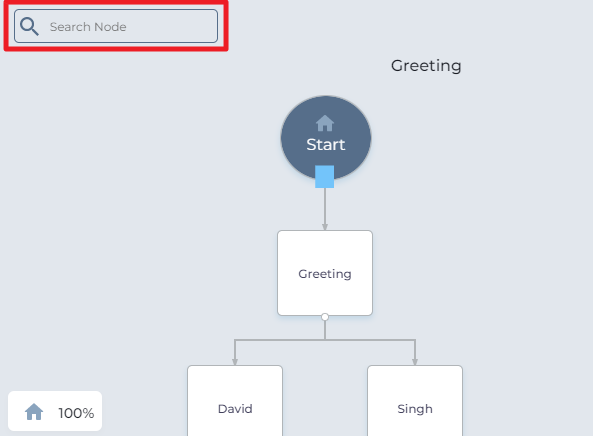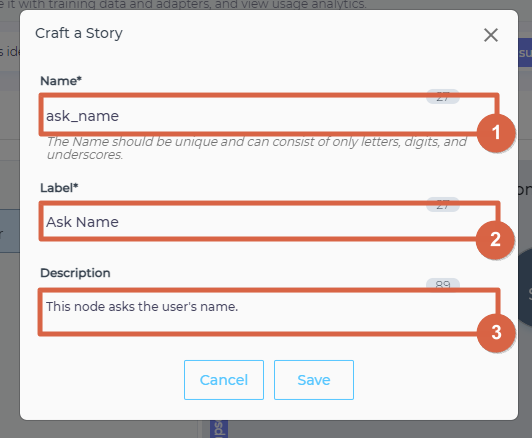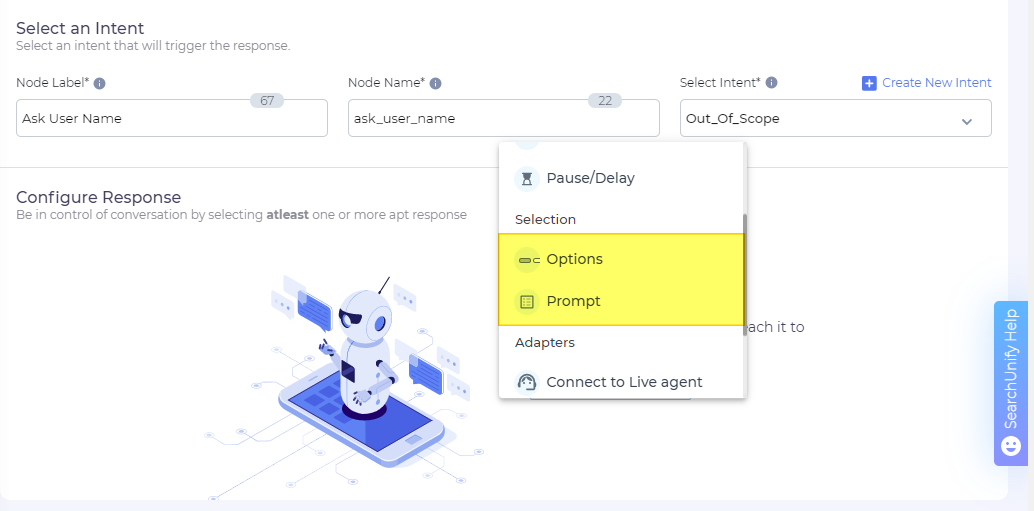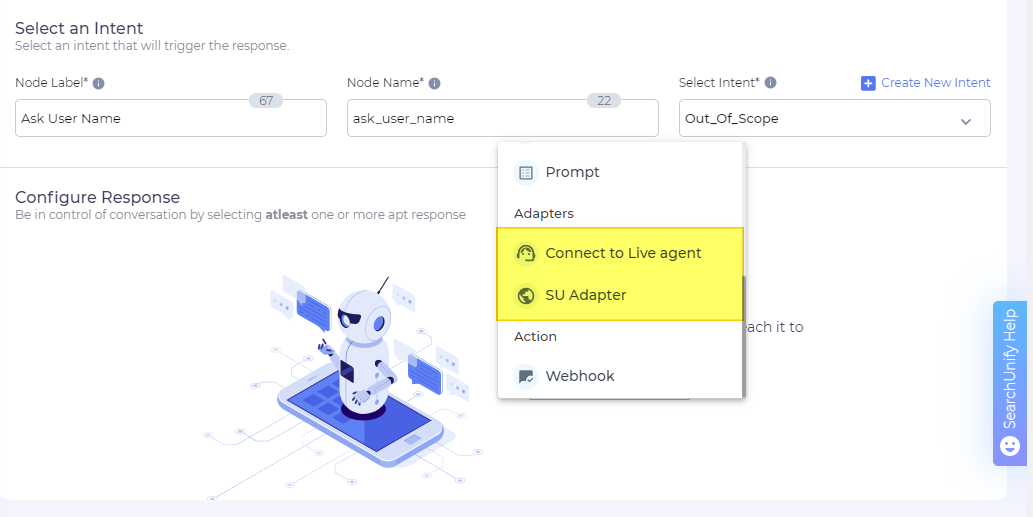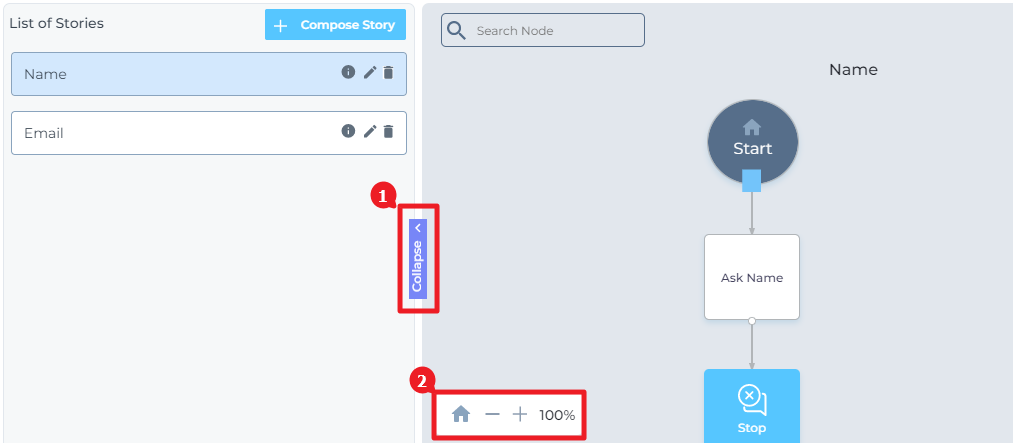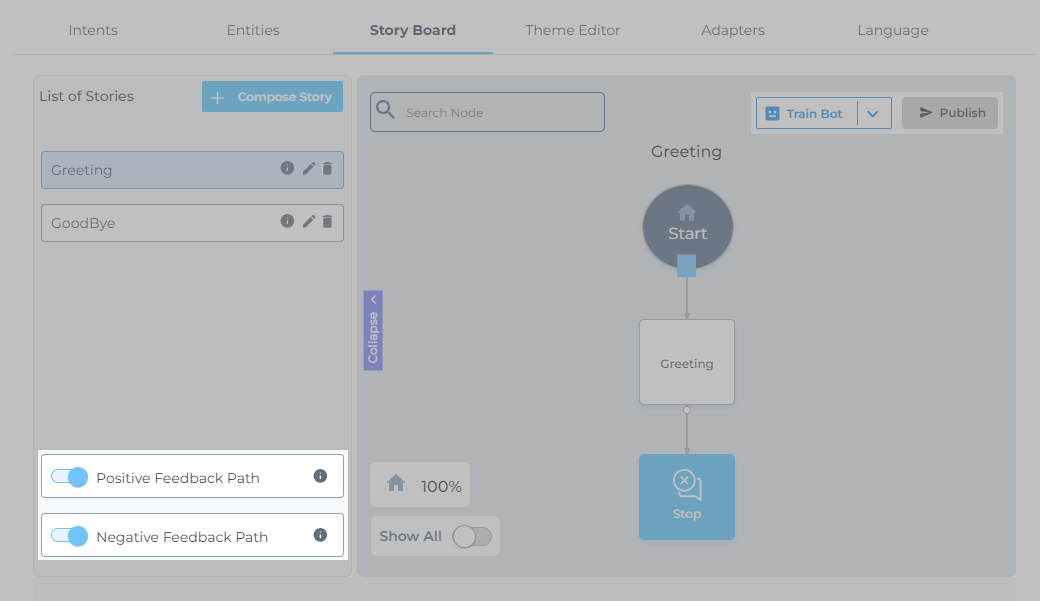Story Board and User Feedback
Story Board is where utterances, intents, and entities come together into a functional SUVA bot. In the SearchUnify parlance, a story consists of nodes. You can connect several nodes to create a story.
Node vs Intent
Nodes are separate from intents. A way to comprehend nodes is to consider a scenario, where a user has three ways to proceed when they show an interest in "search clients":
-
Find platforms where a search client be installed,
-
Find instructions to install a search client on a supported platform, or
-
Discover the list of configurations available after installation.
Intents are used in the parents and child nodes to trigger the responses from the appropriate node of a story. This facilitates users to cover multiple scenarios within one single story. It is optional to add an intent to a child node.
An advantage of separating nodes from intents is that once an intent has been detected, you can create comprehensive stories around it rather fast. When there are several nodes added to a story, you can use the search bar to locate a node.
Compose a Story
- Open a Virtual Agent for editing, go to Story Board. You will see four pre-configured stories: Greeting, GoodBye, Positive Feedback Path, and Negative Feedback Path.
- To create a new story, click Compose Story.
- A dialog with three fields will appear, of which the first two are mandatory.
- Label. The name of your story that can be changed anytime. It is visible to instance users. Names can contain any Unicode character.
- Name. The name of your story that you cannot change, and can only consist of letters and underscores. It is autopopulated based on the Label value.
- Description. A short summary of the story, which is optional.
- Save the story.
- Click
 on the Start node.
Admins can add as many nodes as they want (both as parent and child nodes)
on the Start node.
Admins can add as many nodes as they want (both as parent and child nodes) - In the dialog that has opened, enter Node Label and Node Name. After that, pick an intent in Select Intent. If none of the existing intents matches your story, you can use Create New Intent to write a trigger from scratch.
Note: a) For a newly-created intent, utterances are added from the Intents section. An error is thrown when insufficient utterances are available.
b) Adding an intent is mandatory for parent nodes but not for child nodes. One intent can only be used for one node and if a node is deleted, the intent assigned with it becomes free. You can link it with another node. - Configure Response. Once you have assigned a Name, Label, and Intent to a story, you can save settings and return any time to configure responses. Alternatively, you can configure them immediately. Select Response Type offers several response types in four categories:
a) Simple: Text, External Link, and Pause/Delay. For more information, check out: Get to Know SUVA Response Types: Simple.
c). Adapters: Connect to Live Agent and SU Adapter. For details, check out Get to Know SUVA Response Types: Adapters.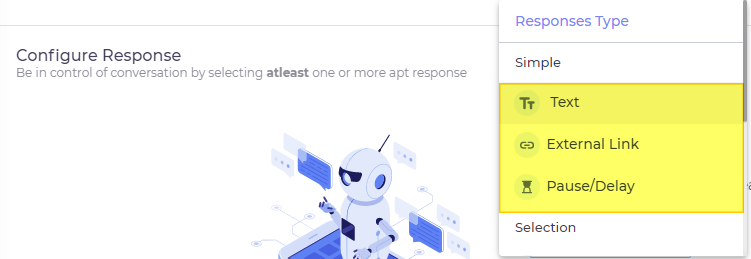 b) Selection: Options and Prompt.
For details, check out Get to Know SUVA Response Types: Selection .
b) Selection: Options and Prompt.
For details, check out Get to Know SUVA Response Types: Selection .d) Action: Webhook. For details, check out Get to Know SUVA Response Types: Adapters
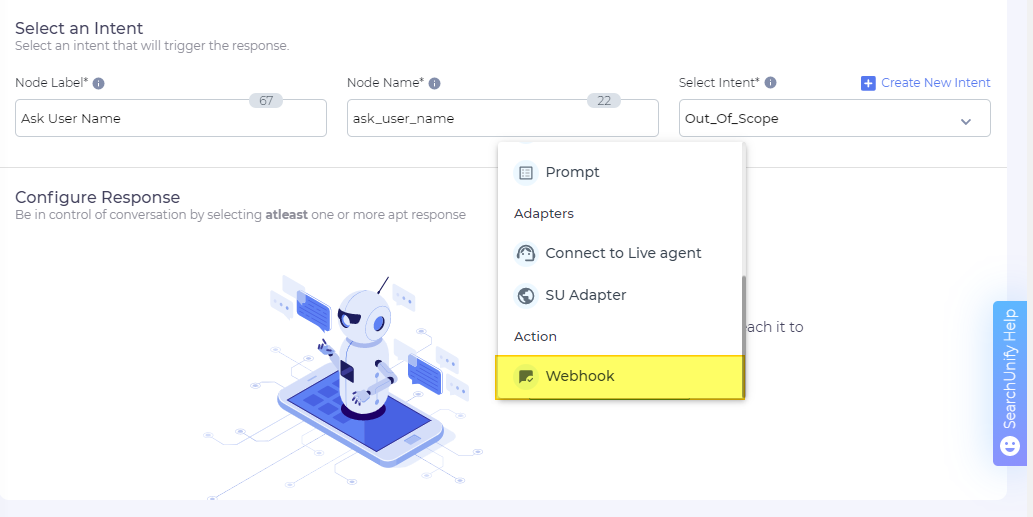 Use Collapse to hide the list of stories on the left. A comprehensive story can have multiple nodes. You can view them all by either toggling on Show All(1) or zooming out through the Home(2) button.
Use Collapse to hide the list of stories on the left. A comprehensive story can have multiple nodes. You can view them all by either toggling on Show All(1) or zooming out through the Home(2) button. -
Create Snippet using KB Article. Generate snippet responses using the KB articles in a story. For details, check out Create Snippet Using Knowledge Base (KB) Articles
User Feedback (Non-LLM Chatbots)
NOTE 1
User Feedback doesn't work on Salesforce legacy search clients.
NOTE 2
Don't check Disable User Input.
Setting up a SUVA agent is a start. Immediately after it goes live, you want to ensure that users are getting relevant answers. Digging through chat logs works in the early stages, when users are few, but this approach doesn't scale. Moreover, users never get to know how hard you are working to improve user experience. User Feedback offers a solution to both of these challenges.
User Feedback asks users to rate conversations. The ratings are stored in a report, where you can review them. It's more efficient than perusing through chat logs. From the users' perspective, a simple feedback question assures them that someone is really interested in helping them. They feel valued.
Unlike many other features, User Feedback doesn't have to be configured. It's linked with the first node in each story and is turned on by default. You can turn it off by toggling User Feedback to the left.
Two stories, Positive Feedback Path and Negative Feedback Path, are configured out-of-the-box in the storyboard. Use them to configure how chatbot should engage with users when they give positive or negative feedback. They are enabled by default and you can disable by toggling them off.
On the users' side, a feedback question—Did you find what you were looking for?—is displayed after conversations. The user can thumbs up (![]() ) or thumbs down (
) or thumbs down (![]() ) their experience.
) their experience.
When ![]() is clicked, the user gets a message from the list of configured responses in the Positive Feedback Path story.
is clicked, the user gets a message from the list of configured responses in the Positive Feedback Path story.
On the other hand, when ![]() is clicked, the user sees a message from the list of configured responses in the Negative Feedback Path story.
is clicked, the user sees a message from the list of configured responses in the Negative Feedback Path story.
Last updated: Thursday, September 25, 2025

